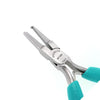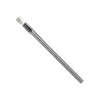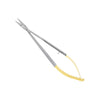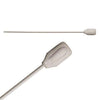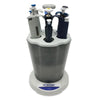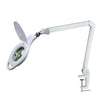- No products in the cart.
Ultimate Guide for Selecting the Best Stereo Microscopes
Jun
13
2020
You can find many types of microscopes out there for both the professionals and the hobbyists and each has a different set of features and bells and whistles that changes the way that they work. Stereo microscopes use two independent optical paths to provide depth perception and three dimensional layers to the object that you’re seeing. This is different from a compound microscope that allows for a single pathway and very high magnification but not much depth perception.
Stereo microscopes, also known as dissecting microscopes are different from other types of microscopes because of three main reasons. They utilize the light reflected off the surface of the specimen under observation instead of the light passing through the sample, they allow for low magnification by design, and they provide three dimensional views as mentioned earlier.
Here is a guide to selecting the best stereo microscope for your hobby or your professional curiosity.
Features to look for
The controlling factor in a lot of purchases is obviously your budget. However, there is a lot that you can get in a medium cost stereo microscope that will be plenty for your needs. Keeping your requirements in mind, there are a few things that you should familiarize yourself with to understand how good the microscope is.
Zoom Magnification
The least expensive microscopes come with a fixed magnification and don’t allow for closer examination of a specimen. However, you can move the lens back and forth and get a closer look. The microscopes that allow for adjustable zoom cost a little bit more and provide better conditions to study a specimen closely.
Optimal Illumination
This is one of the most important aspects of a microscope. If you’ve ever observed something at the molecular or micro level, you’ll know that lighting is of the utmost importance. At that level, the tiniest of protrusions or obtrusions can cast lengthy shadows that obstruct your view. Hence, there needs to be adjustable lighting to control those shadows and give you the best look at your specimen as possible.
Remember, the stereo microscope relies on incident light to observe its specimen; nothing should block that reflective light.
Adjustable lighting can also help keep the specimen under better conditions for its preservation. Remember, at the micro level, light and heat can be lethal and denature proteins or cause detrimental chemical reactions to the specimen.
Greenough Principle
The Greenough Principle is a principle of design that the Greenough Optical System is built upon. It was introduced by Zeiss at the turn of the twentieth century. The principle allows for the construction of a microscope with two identical optical systems with separate eyepieces arranged in alignment within a single housing. This allows for high apertures and provides better focus.
Microscopes based on these principles have the ability to zoom, high magnification, and great imaging. They are thought to be the best available, especially for examining cells from dissected biological specimens.
Note: We offer a wide variety of stereo microscope solutions that can be customized to meet your needs. They can be found in our Microscope section.







